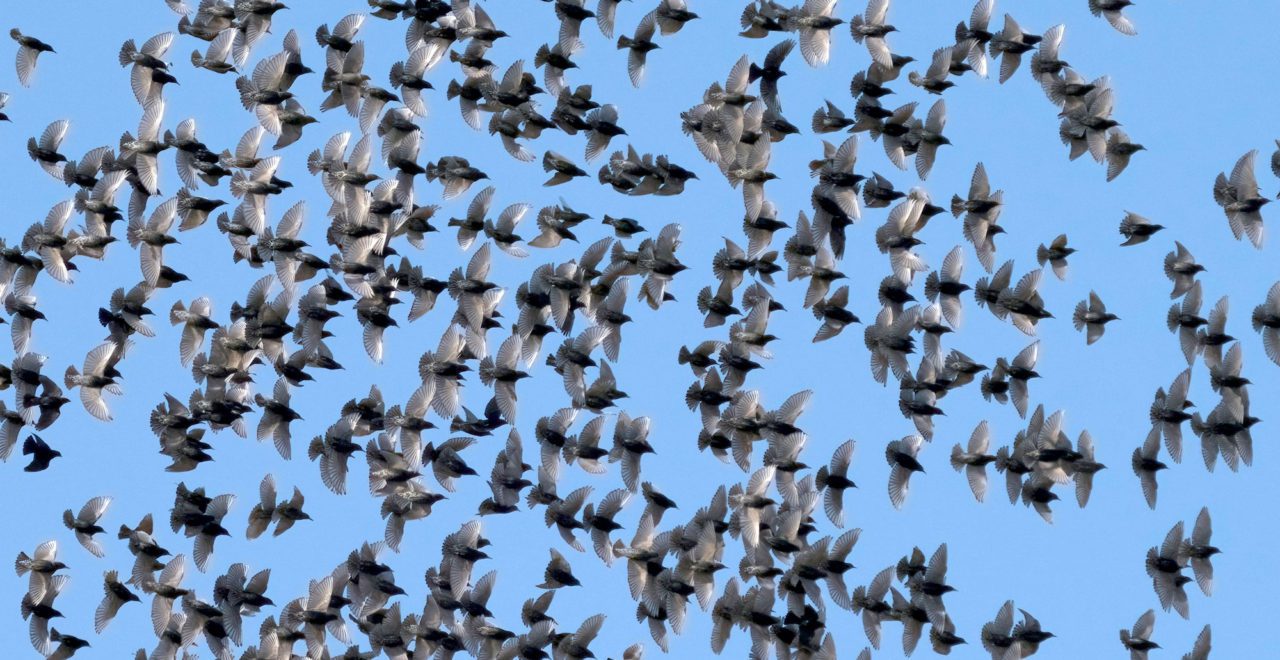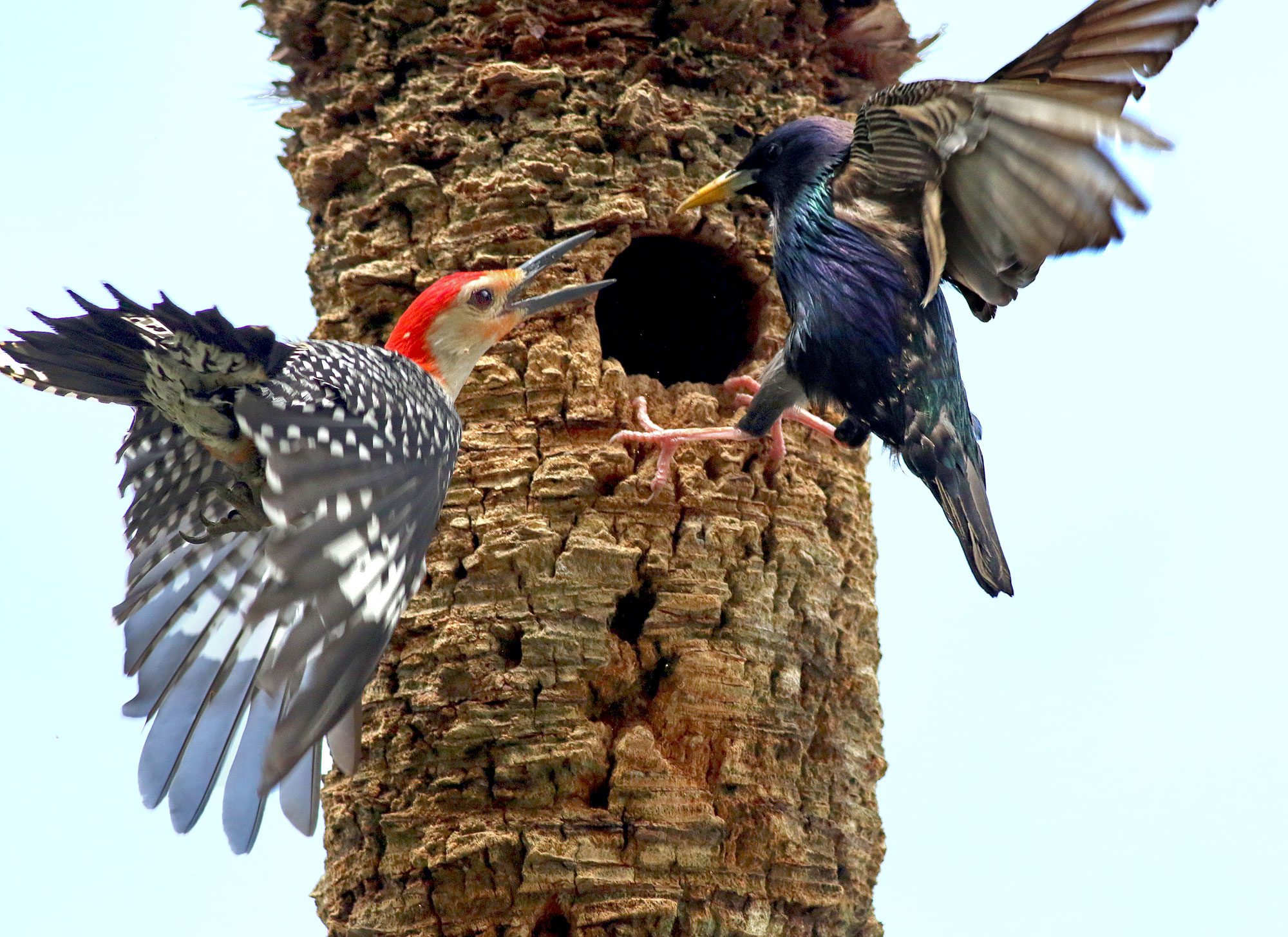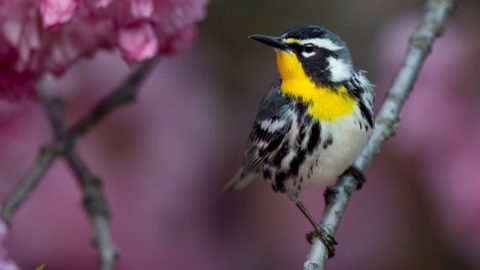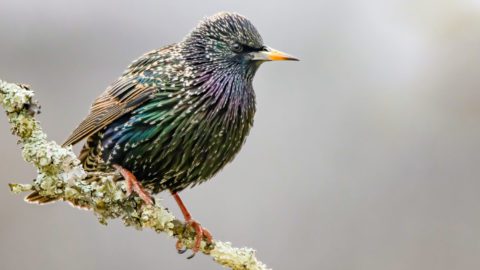Essay: Are Starlings Really “Invasive Aliens”?
By Natalie Hofmeister
March 19, 2021
From the Spring 2021 issue of Living Bird magazine. Subscribe now.
European Starlings are pests: they sometimes eject bluebird eggs from nest boxes, and they eat millions of dollars of grain each year. Officially, the European Starling is designated as an invasive alien species in North America. But they didn’t just land here mysteriously; they were introduced in 1890 by a well-meaning Shakespeare enthusiast. We invited starlings here to the U.S., and now we lament how these birds hurt our ecosystem and our economy.
In this past year of pandemic isolation and social unrest, I’ve had plenty of time to reflect on my relationships with others—including my relationship with my PhD study species, the European Starling. I rarely talk about my research without defending this pest. But this last year has forced us to consider the power of our words, and I’ve begun to think more about why we vilify the European Starling and other invasive species.

I’m a biologist, but I also work part-time facilitating dialogues about identity and diversity. When I take off my facilitator hat and return to my PhD dissertation, I bring questions about how we communicate back to my science. And, especially because most of us in the United States and Canada are immigrants at some point in our family histories, I’m committed to remembering that how I speak about nonnative immigrants changes how we collectively respond.
Biologists call starlings nonnative, but we also call them aliens. When I’m writing up my genetic research on starlings, I use the conventional language we scientists have agreed on in order to signal to other scientists that I’ve done my homework. But I can’t help thinking of the parallels with countless stories about human “aliens.” Whether we intend this comparison or not, labeling immigrants “invaders” and “aliens” isolates those who cross a border in search of a safer, stabler life. Talking about these similarities in language may seem like a pointless academic exercise, but the stories we tell about immigrants (human or starling) determine our actions.
In biology, one key characteristic of an invasive species is that they often outcompete native species. To conserve biodiversity, invasion biologists must decide how to respond when invasive species harm native plants and animals. When we call attention to a conflict between native and invasive species, wildlife managers get the resources to respond. For example, U.S. Fish and Wildlife managers often control starling populations in the name of saving a native species in peril. This conflict repeats itself daily, and each time we must decide which species are truly native—and deserving of protection—and which are invasive aliens.
More in This Issue
I work closely with USFWS managers who work to protect birds, and I struggle to determine my own responsibility in this challenge. I endanger starlings when I call attention to the damage they cause. There are certainly times when we need to manage starling populations. However, as research by my colleagues at the Cornell Lab of Ornithology has shown, starling populations have plummeted over the last several decades. Other research shows that the starling’s negative impacts on native species may not be as dramatic as we thought. Tree Swallows seem to have adjusted their nesting behavior in response to starlings. According to Breeding Bird Survey and Christmas Bird Count data, the presence of starlings does not actually explain native bird declines. Long ago, we designated the starling an invasive alien that threatened native birds, but as ecosystems change, so does the starling’s impact on those ecosystems.
Our national conversations about racial equity and political dissent in the last year reminded me that I must change my behavior in response to crises. It has also encouraged me to consider my impact on others, human and starling alike.
As an ornithologist, I want to protect birds, but what I alone can accomplish is only a fragment of what we can gain together. As elegantly analogized by adrienne maree brown in her book Emergent Strategy, when vast flocks of starlings form murmurations they swoop and dive as one giant interconnected organism in the sky. I think often of what I can learn from these starlings as I aspire to move with such trust in my own communities.

All About Birds
is a free resource
Available for everyone,
funded by donors like you
American Kestrel by Blair Dudeck / Macaulay Library




